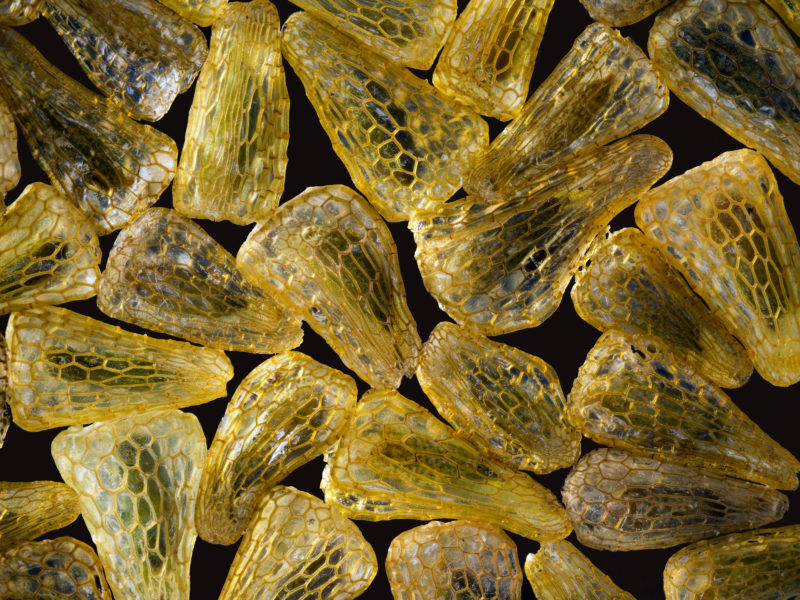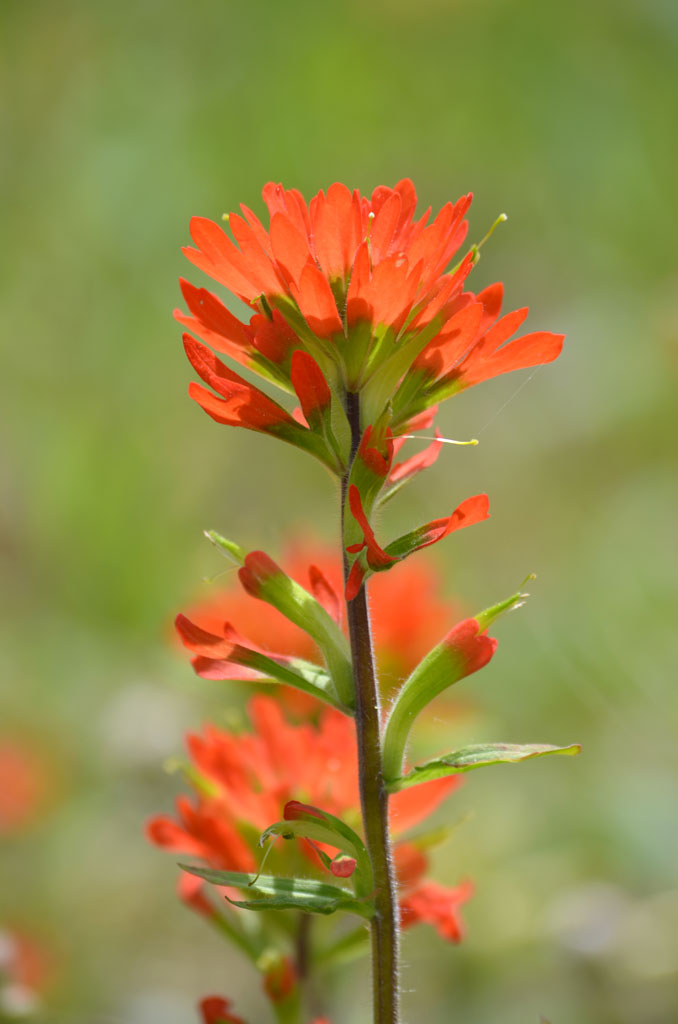

Looking carefully around and under the bracts will reveal small, green, inconspicuous flowers where wind-dispersed seeds form that look like sawdust. In spring, the Indian paintbrush features brightly colored bracts, that resemble flowers, atop 3- to 8-inch tall spikes.

What do Indian paintbrush seeds look like? Unable to obtain its own nutrients, minerals, and water from the soil, it spreads its roots until it finds the roots of another plant. Basically, our beloved Indian paintbrush is a parasite that needs a host plant to survive. It’s part of a group of plants that botanists call hemiparasites. Your best bet is to collect seeds and sow them in the fall along with another herbaceous plant. Because of this need for a host plant, a paintbrush plant usually dies if transplanted. The parasitized plant is frequently a grass. Can you transplant wild Indian paintbrush? Ash-gray Indian paintbrush seeds spread about 16 feet away from the parent plant and remain viable for about two years. I put seed in a labelled Ziploc bag with just enough moisture to prevent the seed from drying out and place it in the refrigerator at 2-5˚ C (35-41 F). In cultivation they germinate after two–three months of moist/cold stratification. In the wild, Indian paintbrush usually germinates in early fall. Be patient the seeds may take a few months to germinate.
Indian paintbrush seeds full#
Seed Indian paintbrush in early spring or late summer in full sun and well-drained soil that’s between 55 and 65 degrees Fahrenheit. Seeding is the best way to plant Indian paintbrush because container-grown plants are difficult to transplant. How do you grow Indian paintbrush from seed? Colonies of Indian paintbrush will eventually develop if you help the plant by planting seeds every autumn. The plant is slow to germinate and may not make an appearance for as long as three or four months. Growing Castilleja Indian Paintbrush Plant seeds when the soil is between 55 and 65 degrees F. Can you transplant wild Indian paintbrush?.How do you grow Indian paintbrush from seed?.It is present in most of the eastern states, including those bordering the Mississippi River, as well as Texas, Oklahoma, and Kansas. This species likes sand and grows in both prairies and open woods. Ironically, this plant was used by Native Americans as both a love charm in food and as a poison used to against their enemies, as this species is known to have toxic properties. Seeds are contained in a chambered capsule with two divisions, and once ripe, the capsules split open and wind action helps scatter the up to three hundred seeds within each capsule. Although seeds can germinate the same season as when they are released, usually they germinate the following spring and produce a basal rosette that will flower the following season. Also, the lack of a lower petal lip denies insects a perch to rest on, favoring hovering organisms like bees and hummingbirds. Hummingbirds have long bills that allow them to reach the nectar rewards at the end of long, tubular flowers. However, like most red flowers, this species is especially adapted for pollination by hummingbirds. This is somewhat surprising since the color red is difficult for insects to see. A variety of insects visit paintbrush flowers, especially bees. Despite being obligate parasites for part of their lives, these plants do rely on pollinators for reproduction. These plants are hemiparasites, meaning that although these plants are green and can photosynthesize, they also have the ability to sequester nutrients from other organisms, in this case, from perennial grasses.

lutescens), as well as a separate closely related species that also has yellow bracts ( Castilleja sessiliflora). Also, there is a form of this species that has yellow bracts ( Castilleja coccinea f. The actual flower petals are rather inconspicuous, although the tip of the sepals are tinged with red as well.

The showy red structures are technically bracts, a type of modified leaf, and not petals. The genus name “ Castilleja” is named after Spanish botanist Domingo Castillejo, and “ coccinea” means “red,” referring to the red bracts that surround the flowers. This plant is also called painted cup for the showy cup-like bracts. This species was formerly placed in the Figwort family (Scrophullariaceae), which was a hodgepodge of genera that didn’t fit well in other families. Indian paintbrush is an attractive member of the parasitic Broomrape family (Orobancaceae).


 0 kommentar(er)
0 kommentar(er)
